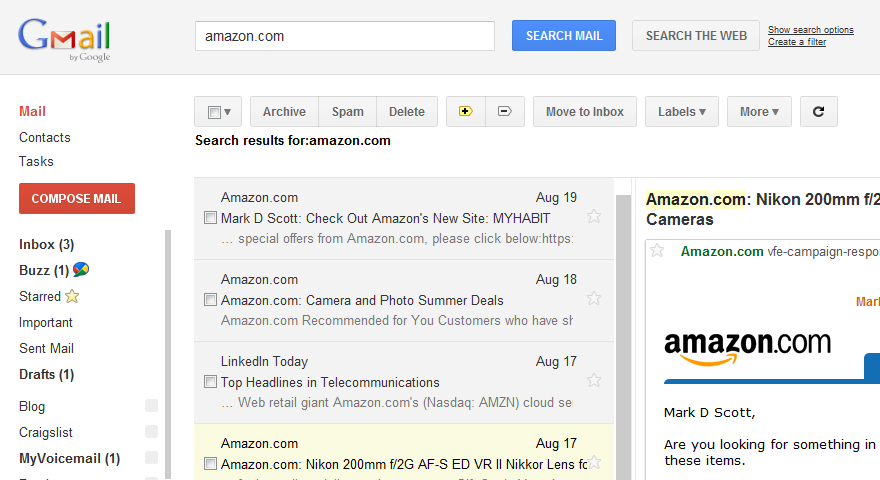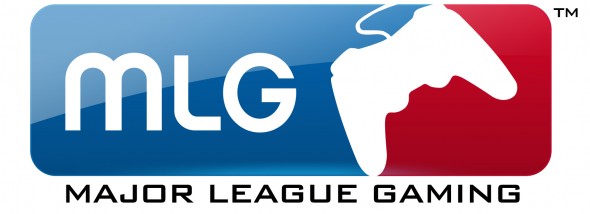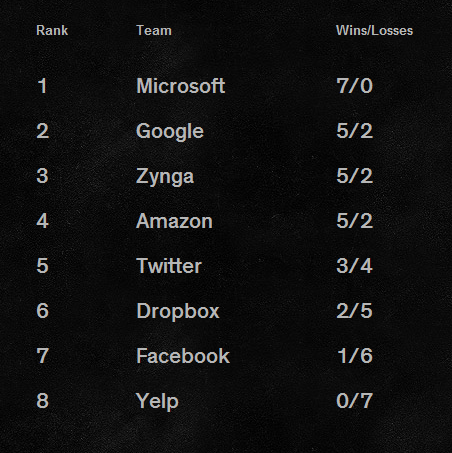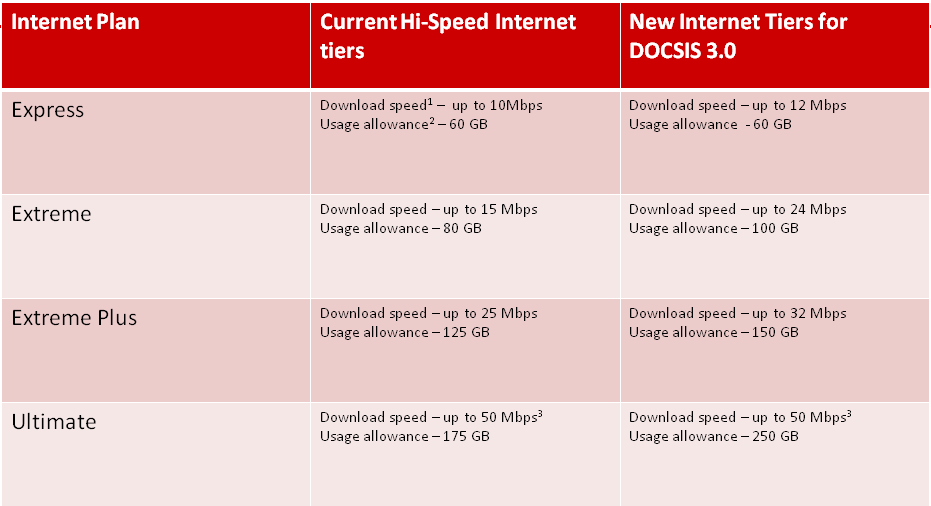-
Changing Money
Although the Euro countries are discovering some of the economic downsides to having a unified currency, moving from Canada to the U.S. highlights the personal downside to a non-unified currency – when you convert your savings from one currency to another, it’s impossible to avoid losing a significant amount of cash. Having purchased a home in the U.S., the looming need to make a down payment had us searching for options to do this in the most efficient way possible. Here are the options we considered, and what we ultimately used.
This wound up being a slightly lengthy post, so I’m going to put a break here to save your RSS reader if you don’t care about this topic. You might at least be amused by the picture of the place I ultimately went with, though :).
-
Moving
I haven’t posted in a little while, but it’s not because I haven’t been busy. Indeed, from the day of my prior post, we purchased a new home, sold our existing condo, and I announced to my colleagues at Alcatel-Lucent that I’d be moving on to a new role at Google – working out the Kirkland office in the greater Seattle area. While some of those things were in progress for a while, others went very quickly; we listed our condo last Wednesday and accepted an offer on it on Monday. There’s thoughts I wanted to share on this from many angles – why I decided to change jobs, the real estate process, moving money between currencies efficiently, and several other topics – some of which will have to wait for a later post. But I’ll keep this post to the “why” – why move, and why Kirkland?
-
Gmail vs. Outlook
As soon as I could get an invite, I switched to using Gmail for my personal E-mail. It’s initial appeal was in the mind-blowing free storage quota – 2GB compared to other services that were still just offering a handful of megabytes. But it’s open approach to POP3/SMTP clients (letting you use whatever client you wished), its simple & clean web interface, relatively effective spam filtering, and search-for-organization paradigm would also grow on me. Indeed, even the knowledge that I could one day easily forward my account elsewhere if things didn’t work out was something I really thought highly of.
Great as the core service was, and though the web interface was handy when I needed it, I actually continued to use Microsoft Outlook as my primary mail client. Besides familiarity, Outlook had no issues with large volumes of mail (I have about 45GB of work E-mail in PST files from the past decade), search finally became decent as of Vista, the HTML mail editor was quite good (and better than any web-based editor I’d used), and it gave me a single client for work E-mail (via Microsoft Exchange Server) and personal E-mail. Since I did want to keep my work and personal E-mail separate, if I needed access to my personal mail outside my home I still used Gmail’s web interface, but otherwise, I was using Outlook. For my needs, it was just the better client.
That changed with the availability of the Preview Pane for Gmail, which is a “Labs” (beta) add-on that you can opt to use with the web interface. If you click on Options (top right) -> Mail Settings -> Labs, one of the “Available Labs” is called Preview Pane. You can enable it to get what at first glance seems like an layout cloned from Outlook:
The above screen shot isn’t the best, in part because this extension works the best when you have a large monitor, and in part because Amazon thinks I can afford the 200mm f/2G (a $5,000 lens). I’m fortunate enough to use a 30″ monitor both at home and at work, but posting an 1800-pixel wide image above would not really have helped most people I think.
Basically, though, you can see that the main area is now split into two panes; the left pane shows the list of conversations, and the right pane shows the messages within the selected conversation. Without the extension, when you click on a conversation it normally replaces the message list. I don’t know why it’s called “Preview Pane” other than Microsoft Outlook calls it that. It’s really just a two-panel view (or three-panel, if you count the folder/label list).
Why is such a seemingly cosmetic change so important to me that it sealed the deal? A few reasons:
- It finally gives Gmail an mode of operation that’s optimized for large desktop monitors like the one I use. The prior interface simply left most of my screen real estate unused.
- I can jump directly between messages of interest. Before, if I wanted to read messages # 1, 3, and 7, I had to click 1, click Inbox, click 3, click Inbox, and click 7. Now I can just click 1, 3, 7. This greatly speeds up dealing with mail, much more (for me) than the Priority Inbox feature did.
- It’s better for handling new incoming messages. I can see the new message show up in the message list without interrupting what I’m doing. Before, clicking on the pop-up notification of a new message spawned a new browser window which was always right on top of the one I was previously looking at (because of the way the browser spawns new windows by default – press Ctrl-N and you’ll see what I mean).
- Another reason it was better for handling new messages was that clicking on a new mail pop-up is slow, especially if your connection is not awesome. It would often take 3 or 4 seconds for the window to load and for the message appear. Now, although the mail doesn’t show up in the message list as instantaneously as Outlook, it does get there pretty fast and I can click and see its contents immediately.
Google really prides themselves on speed, as you can see from their insistence on telling you how fast your search ran – but this extension is a great example of how just a better layout with the same underlying technology can make thing vastly faster for the end user. This isn’t going to be perfect for every form factor, but it’s great for me, and it has me using Gmail via the web as my preferred client. I strongly recommend giving this a try! -
Watching E-Sports
In an earlier post, I wrote about NE-SE, a new e-sports organization that was trying to encourage players of all levels to enter their tournament – so that they could raise the cash necessary to pay the ~$50k in prizes that they committed for a live finals. However, I got one critical point wrong – they are charging $20/person as an entry fee, not $10/person. That means the payouts are what I had described ($498,560 per tournament), but what they take in is $1,024,000 instead of $512,000. That makes it a spectacularly good deal for the tournament organizers, if they can get enough people to sign up. Unfortunately for them, especially at $20 instead of $10, you can be pretty sure that they’ll get nowhere close to the numbers to make their scheme work. And with the numbers this much in their favor, I’m really surprised that Blizzard endorsed them.
That being said, I’m definitely a big fan of e-Sports in general. If you haven’t heard the term, it generally refers to competitive gaming and while I suppose it could refer to any competition between people, online or offline/LAN, it’s usually used in the context of professional individuals or teams competing against each other. In North America, e-Sports is still in its infancy, though it’s grown rapidly over the years. South Korea has had a robust e-Sports scene for a decade, ever since the original Starcraft established the phenomenon a dozen years ago.
In Starcraft 2, the best players in the world still hail from South Korea, without question, and the premier league – the GSL (individual) / GSTL (team) – is played there. North America has several organizations trying to establish themselves, but at this point in time, Major League Gaming (MLG) seems to quite clearly be the best. While MLG got off to a bumpy start, the most recent event (MLG Anaheim) was great to watch – and was the first event I tuned into a good bit of live, sending me over my Rogers bandwidth cap for the month. Europe has high level play a well, but I’m less familiar with it. Some bars in North America have even started airing live games from the GSL/GSTL on certain nights of the week (a phenomenon known as Barcraft)!
Beyond top-level professional play, the online nature of the game has given rise to other interesting leagues – like the After Hours Gaming League (AHGL), which features 8 high tech companies (this season, anyways) battling it out. The AHGL started at Facebook, but expanded to 8 other companies, who are competing for the charity of their choice… and a significant amount of pride, since some of the companies are fierce competitors. Fortunately, three of my favorite tech companies are currently in the lead:
On one Youtube broadcast I was watching recently, one of the commentators (HD Starcraft) said that with games being so much more interesting to watch than regular sports – a comment I actually agree with – that e-Sports was really the future. That, and a bit of analysis on the chart above, are actually very interesting topics…
-
Why lug a DSLR around?
Cameras of all sizes have been getting consistently better over the years. The $600 (including lens) entry-level D3100 takes better pictures than the original $5,000 (body-only) D1 did years ago on its introduction. Compact cameras have benefited on a similar pace, from shooting VGA photos that were at best sufficient for the web, to being indistinguishable at smaller sizes and in the right lighting conditions from much more expensive cameras. The compact camera segment itself is under significant pressure, as an increasing number of people find themselves satisfied with the picture taking capabilities of their cell phones. With all these improvements, are the differences still worth all the extra weight that each size class brings with it?
The Rogers Cup was a great place to ask this question, as the first day that we made an impromptu trip there, I didn’t bring a DSLR and only had my S90 compact camera. I’m still really glad I brought it, but how did it do in general? Here’s Kim Clijsters during her practice, at 6:38pm last Saturday:
I was right up at the edges of the court, but my S90 was still at f/4.5 and ISO 320 to get even remotely enough speed to capture the shot. We were back the next day, same court, 6:34pm – this time, it was Svetlana Kuznetsova from Russia who was practicing:
This second shot was with the D7000 at f/5.6 and ISO 450, using the 70-300 VR lens. At these small sizes, the pictures might not look too different quality wise – but click for larger versions, and you’ll see an enormous difference between the two. In addition, I was much further away with the second picture thanks to the added reach of the 70-300 (and I was only at 100mm!). Sitting for a brief period at an actual game at center court, I really needed the full reach of the 70-300:
At maximum zoom on the S90, the player pictured – Japan’s Kimiko Date-Krumm, in a match against China’s Zheng Jie – would have been six times smaller!
It goes without saying that sports, where both speed and reach are needed, are where you’d expect a DSLR to do well versus compact cameras. What’s worth emphasizing here is that it doesn’t take much equipment to get half-decent results; you could have gotten identical shots to the above with the D5100 ($800) and 70-300 VR lens ($550). You could get near-identical results with the D3100 ($600) and the 55-300 DX VR lens ($350) that pro photographer Thom Hogan posted a positive review of today. In fact, I dare say that even at my limited skill level, you’d even get basically the same results with a used D80/D200 and 70-300 non-VR, the combined used price of which is not far off what I paid for my S90 compact! Pro-level gear for sports gets very expensive, very quickly – to the tune of $5,500 if you want a 300/2.8 lens instead of the 70-300 I used – but you can still do pretty decently at your kids games for a tenth of the price (and only a little more than the price of a compact camera).
At the heart of these differences is just basic physics on the differing sensor sizes:
- The iPhone 4, which is very well-regarded and well-specified for a camera phone, has a 1/3.2″ sensor that’s roughly 4.5mm x 3.4mm = 15.3 mm^2 in total surface area.
- My PowerShot S90, generally considered to be a very competent compact, has a 1/1.7″ sensor that’s 7.6mm x 5.7mm = 43.3 mm^2 area (2.8 times larger than the iPhone 4 sensor)
- Nikon’s DX cameras, like the D5100 and D7000, have APS-C sensors that are 23.7mm x 15.7mm = 372 mm^2 area (8.6 times larger than my S90)
- Full-frame cameras like the D3 series are 36mm x 24mm = 864 mm^2 (2.3 times larger than DX cameras, and over 56 times larger than the iPhone 4 sensor!)
There’s a pretty notable difference between tiers, but the gap between a competent compact and an entry-level DSLR is by far the largest – and at the end of the day, more area means more photons can be captured. There are interchangeable lens formats like four-thirds that fall somewhat in the middle, but overall, it’s not surprising to see that results seem to be consistent with physics.
The other relevant difference not mentioned above is the lenses. The iPhone 4 has a fixed 28mm-equivalent lens. The S90 has a 28-105mm equivalent zoom range. My D7000 with the 18-200 has a 27-300mm equivalent zoom range, and the bag of three lenses I took on Sunday had a 15-450mm range (with some gaps in the middle). Of course, there are compact superzooms, and even cameraphone accessories, but you clearly give up a lot on the reach side with smaller cameras.
In the end, smaller cameras may suffice for many things, but since running kids is a big part of my agenda, I’ll still be lugging the heavier cameras around. I still just wish I had been last Saturday when we met Kim!
-
A couple of Starcraft 2 topics
As I’ve mentioned previously, I’m really quite into Starcraft 2 – despite my continuing inability to make it as far as Diamond league in 1v1. Fortunately, the game is pretty fun regardless of what level you play it at.
The first thing I though worth mentioning is that a free “Starter Edition” is now available; it provides some of the single player content, as well as limited multiplayer. You’re basically restricted to playing as Terran in all cases (as if Terran weren’t doing well enough at high levels of play right now), and can only play on a handful of maps, but it’s still a great way to try things out if you’re not quite ready to quit your job, move to South Korea, and train as a professional gamer. The image below links to more information on this.
The second thing I found interesting was the announcement of the “National E-Sports Event” (NE-SE) on Blizzard’s main Starcraft 2 news page. NE-SE is running a SC2 tournament, available to players of all skill levels, with a US$30,000 prize for the ultimate winner. However, the reason I found it interesting to comment on this is because of the way that this tournament is structured:
-
Meeting a Champion
Choosing a title for this post was tough; I wasn’t sure whether “Champion” or “Hero” was more appropriate, I thought perhaps “Supermom” would be an appropriate title too (given an article my brother Pete recently shared). “Always Bring Your Camera!” also came to mind, and any of these would have been equally appropriate. A picture here is worth more than a thousand words:
If you’re not familiar with tennis, that’s Kim Clijsters, currently ranked #2 on the women’s tour, and the defending U.S. Open and Australian Open champion. She’s in town for the Rogers Cup, which started today (Saturday) and wraps up this coming Sunday. Today was just the qualifiers, so entrance to the grounds was free, and with the kids getting bored late in the day we decided to head out. On arriving, we were hesitant – everyone else was leaving, and the bus driver said he thought the last match was probably over or almost over. We pressed on anyways and in one of the back courts, Kim Clijsters was practicing for an upcoming game. After finishing her practice session, she graciously and generously spent some time with the fans that had discovered her presence, signing autographs and taking pictures.
To me, this isn’t just a photo with a famous person; Kim is my favorite player in all of tennis. A part of this is how well she plays; her trademark sliding split returns are just amazing, even though I think even she herself described them as something she should be trying to avoid. But the much bigger part is her attitude and character. At a previous Rogers Cup event I attended – I believe in 2005, but my poor memory is a big part for writing this blog – she was playing on center court, and the linesman made a poor call in her favor. This happens all the time, and gave us some of the defining moments in John McEnroe’s career. Kim recognized that the call was in error, and gave her opponent the point – in a tier 1 tournament with a $2 million prize pool. I’ve never seen someone with that much class despite the fierceness of competition at top levels; that move earned her my lasting respect.
As if this wasn’t enough, her return in 2009 after retiring in 2007 to have a child is inspirational to any parent (and probably to most non-parents too). From a wildcard spot, she won the U.S. Open that same year (the first mom to do so since 1973), and has taken two grand slams since then. My brother recently posted a link to “Killing Off Supermom“, which debunks – generally correctly – the notion of great mom’s that have everything under control. But I think we’d all agree, letting your 18-month old daughter hoist the U.S. Open trophy with you is pretty darned “super”.
Despite all this success, Kim is as personable as ever. As she made her way off court above, security personnel tried to ensure that she didn’t get mobbed by fans, and – doing their jobs – they tried to shoo people away. She intervened and insisted on posing with us and others, even though she’d already signed autographs and taken pictures with several other groups earlier. That’s just amazing, and it’s why she’ll be my favorite regardless of how she does in this or any other tournament.
I really owe Wen who took the above shot and wish he could have joined us in the picture too (at least we did get Linxi in there!). I also wish I had been lugging one of the DSLRs around, but fortunately the above shot from the Canon S90 still captures things fairly well! Finally, given that I’ve ranted about Rogers broadband speeds in the past, I do have to be grateful that they continue to be the title sponsor of the Rogers Cup, and in doing so, bring people like Kim Clijsters to town – today, I definitely owe them one!
-
My D7000 returns!
At the end of last week, I finally got my D7000 back from Nikon, after having sent it in for servicing. In the interim, I’d been using the D3 that I was temporarily in possession of, and had started to forget just how gargantuan the D3 really is:
The D7000 is by no means a small camera – but it looks and feels tiny in comparison to the D3. It’s amazing what you can get used to; if we think of the size of a Walkman now versus an iPod Touch (let alone an iPod Nano), it seems huge – but the size never bothered us at the time. That said, the D3 is simply enormous in absolute terms – if you’re trying to use it one-handed with a big lens (often necessary due to the kids), you’d best ensure your wrist is in good shape!
If you’re wondering, I took the picture above using my Canon PowerShot S90 compact camera. It actually took quite a bit of effort – there’s no good light in our home at night, and the S90 doesn’t support an external flash, so I was holding and manually firing a Nikon SB-600 in one hand, and a Nikon SB-800 in the other. I missed quite a few times :).
So why did I have to send the D7000 back, and how did Nikon do?
-
The REAL reason for Google+
There’s lots of discussion, prediction, and outright speculation about Google+, what its ultimate goals are, and what will become of it across pretty much any technical blog. While I’ve completely avoided Facebook (and am probably one of few human beings anywhere who has a blog but not a Facebook account), I have played around a little with Google+. In some ways it’s a useful way to share and keep track of people, but in others it’s what I feared Facebook would be – just another source of information when I already had too many. At some point, I’ll probably write up my thoughts so my kids with their sub-dermal Google+ implants can laugh at how much I didn’t get it.
For now, though, I’ve discovered the true secret behind Google+, straight from the “Suggestions” of people I may want to follow in Google+:
I guess when you have $20 billion – each – then instead of friending people on Facebook, you can just build your own social network and have it tell everyone to add you to their circles :).
Of course, in true Google style, I’m sure that the recommendation is actually based on an algorithm, even though for some odd reason it never recommended that I follow Mark Zuckerberg (even though he was in the most circles shortly after the Google+ launch). But perhaps even that’s just because Google knows I don’t have a Facebook account :).
-
Rogers – still about fast?
In an earlier post titled Rogers – All About FAST, I discussed the rather underwhelming performance I was getting from Rogers.
Olivia? She’s fast:
Faster even than the Nikon D3 I’m still using, it seems! Nikon service (on my D7000)… not nearly as fast. In any event, Olivia certainly doesn’t move slowly!
Rogers? Not so much. But apparently, they’re improving a little, as reported in this post on Engadget which describes bumps to both the speeds and bandwidth caps across all Rogers Internet offerings:
The problem with the Engadget post is that it doesn’t actually spell out all of the details; specifically:
- This is not an automatic increase in your download speeds or bandwidth cap – it’s only available if you have a DOCSIS 3.0 cable modem; and,
- While there is no up-front charge for switching to a DOCSIS 3.0 modem, you will pay an additional $1.50 to $3.00 a month for it.
Rogers is quite straightforward about the details in their own announcement, which they posted here – though at the same time, it’s counter-intuitive as to why they’d offer slightly higher caps if you switch to a new modem. Amusingly, if you click the Rogers link above, the table you see reproduced here is actually a very large 1,400KB bitmap file which gets shrunk in your browser to the appropriate size. What you see above in this page is a 34KB PNG file that looks exactly the same, to the pixel. If everyone made images 40 times bigger than they needed to be, then we’d all need to be on the Ultimate program! As a further jab, their link on the page to see what kind of modem you have doesn’t even work!
Of course, I have a few more thoughts on this whole thing…












